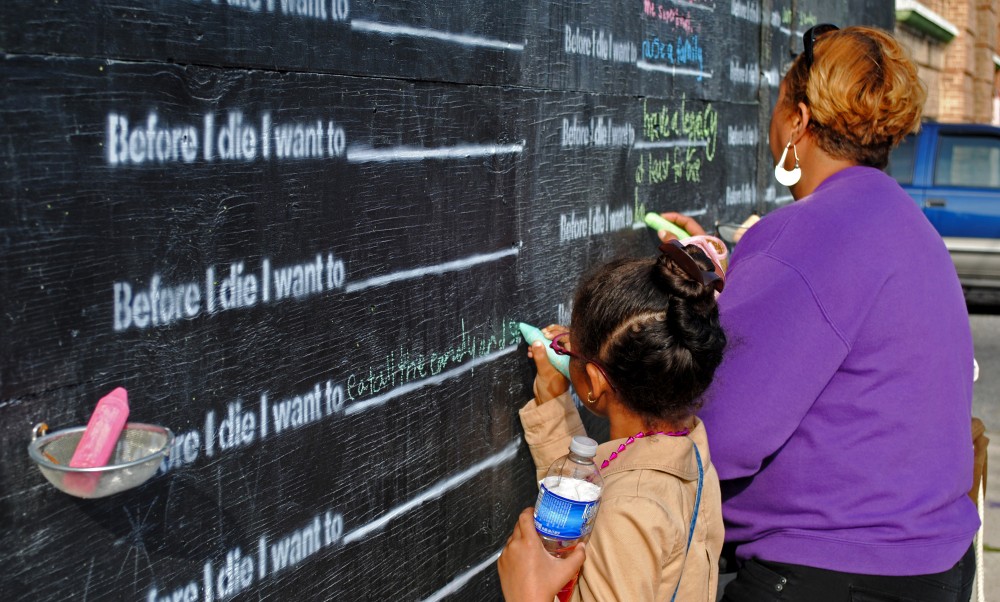
The inspirational speaker at the continuing education conference I attended recently was Candy Chang. Candy is an urban artist, so I appreciated hearing from someone who is not in our profession and clearly has a different perspective. Her public exhibitions, such as the Before I Die installations, explore the intersection of the individual to the community. She seeks to destigmatize mental health issues, challenging us to approach other people with curiosity instead of judgement. She talked about financial health as a big stressor and an essential element of overall well-being. She discussed everyone’s obligation to the community to help equip others to deal with life’s challenges.
Following her presentation, we discussed the legacy that we hope to pass on to our children. The translation from Candy’s presentation to our work is the message that a legacy is not just money passed on to the next generation. The facilitator spoke to the 5 components of wealth, which is the old English wording for state of well-being, suggesting we reframe the conversation around wealth to well-being. Financial is only one component, with the others being human, intellectual, social and spiritual. As a result, a legacy comes in many forms, with the overriding goal to help equip future generations with the capacity to deal with life’s tragedies, as well as opportunities.
A family’s wealth is healthy capital beyond monetary wealth. Human wealth might involve capturing the experiences of the family, such as monthly videos archived to a family website. Spiritual wealth within a family might mean understanding what it means to be a member of this family and how you interact with each other. The social component refers to how the family relates to the community as good citizens. The overriding message is to avoid setting up an inheritance as an honoring of just the financial assets.
The facilitator went on to breakdown the inheritance into covering necessities, providing opportunities, and promoting a healthy world. If you rearrange these, you might envision a fund to seed capital to encourage an entrepreneurial spark, yet provide a backstop to help if something happens.
Every gift, whether present or future, should be accompanied by a purpose statement to engage and respect the relationship between both the giver and the recipient. For example, many of our clients gift money to their adult children every year. The note with the check might say, “I hope this gift allows you to take care of something you always wanted to take care of; do something you always wanted to do; or payoff debt if that is really what you need to do”.
An Opportunity fund could require the family member to apply for a grant or loan, open to every beneficiary as long as they go thru the requirements, to participate in promoting particular callings, ether a business venture, mission trip, or pursuing a particular passion. A Social Impact Fund could authorize each family member to make a donation to a charitable cause up to x% or X with the purpose of making an impact and come together as a family around philanthropy. Alternatively, consider matching up to a certain amount or percentage of whatever the family member donates to a charity. Many of us match ROTH contributions for our young adult children, so it is just an extension of this to social impact.
This isn’t just when we die stuff, but before we die stuff. There are many ways we can prepare the next generation to be successful in dealing with wealth.
Cathie Straub
Director, APCM Wealth Management for Individuals
6/12/19






